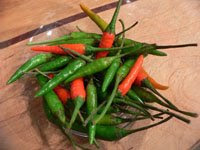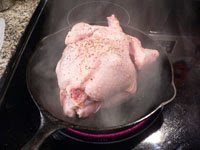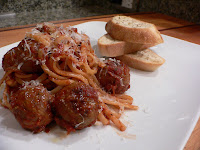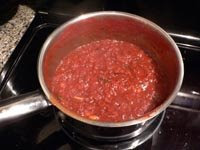As with most cooking, Risotto relies on sound technique, and while there are plenty of recipes out there, understanding the basic technique is vital. Once you get that feel for when to add liquid, how much to stir, and when to stop the cooking, the flavors and accouterments you add are infinite and you are free to be truly creative.
The key to a great Risotto is activating the amylopectin in the short-grain rice and creating that wonderful creamy sauce. While a lot of tradition calls for you to be chained to the stove and constantly stirring, this is neither necessary or beneficial to your Risotto. The only requirement for Risotto is using said short-grain rice, as they contain the highest ratio of the amylopectin that leads to the proper texture. While Arborio rice is widely available, there are certainly many more short-grain varieties that can be used instead. Stir it when you feel it needs to be stirred, add liquid when you feel it needs it. The key to avoiding a miserable result is stopping the cooking process at the appropriate time.
With these guidelines and this recipe illustrating the basic technique, you're sure to have success as well as a delicious meal.
Kale, Herb and Gruyere Risotto
(Recipe serves 2 people)

1 cup, Arborio Rice (any short-grain rice works)
3-4 cups, Chicken Stock
1 Meyer lemon, Juiced
1 T. Butter
1 T. Olive oil
2 cloves Garlic, sliced thin
8-10 Parsley stems, minced
1/4 cup, Gruyere cheese, shredded
1/4 cup Herbs, chopped fine (Parsley, Oregano, Thyme, Rosemary)
1/4 cup Hazelnuts, toasted then roughly chopped
1 bunch Kale, stems removed, sliced thinly, blanched and drained
Combine stock and lemon juice in one pot.
Heat over low, boiling is not necessary, the stock just needs to be hot.
In another pot, heat oil.
Add Parsley stems and Garlic and toss.

Add rice immediately and stir until the grains become somewhat translucent.

Add enough liquid to cover the rice and stir.
Adjust heat so the mixture is boiling lightly.

Stirring constantly is not necessary, but the occasional stir lets you get an idea of how much liquid has been absorbed.
When most of the liquid is absorbed, add liquid to cover. A good indicator is that the rice separates when a spoon is pulled through.

Repeat these steps until the rice, when tasted, has a bit of texture left ("tooth" as it's called.)
Remove from the heat.
Stir in the Kale, the herbs and the cheese.
Finish with the butter and stir until it's incorporated.

Adjust seasoning with salt and pepper.
Plate and garnish with more herbs, cheese and the toasted hazelnuts.
Drizzle with a good olive oil and enjoy!















